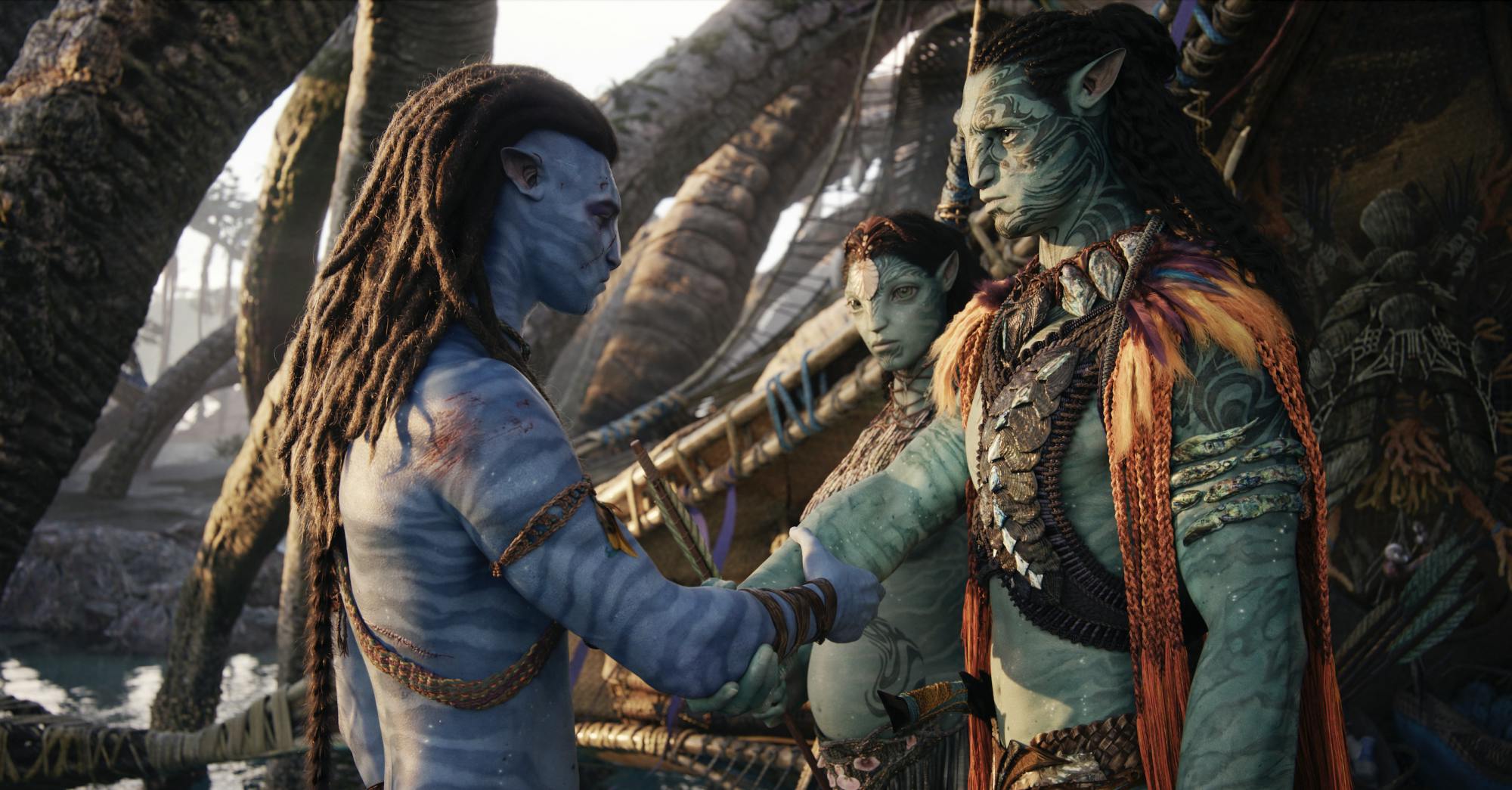After 13 years, the sequel to James Cameron’s iconic “Avatar” film finally arrived. With it came a new outlook on the characters, symbols and controversy of the blue-tinged Pandora universe.
“Avatar 2: Way of Water” sees former human-turned-Na’vi Jake Sully and his partner, Netriyi, fighting to protect their newly-formed family while exploring new regions of Pandora and encountering threats, both new and old.
Human resources sophomore Andrea Galvan said the film had a similar feel to the first “Avatar.”
“I think it was good,” Galvan said. “It wasn’t great, in my opinion, just because it took so long to get another film out. It kind of lost a lot of buildup, because (after) those 13 years, we didn’t see what was happening, so they had to shove it all into one film.”
Since 2009, when the first “Avatar” movie was released, there has been much debate among film critics and audiences alike over whether or not “Avatar” has had any cultural impact.
With “The Way of Water,” the debate continues.
Galvan said she thinks that “Avatar” has achieved a lasting legacy through its powerful themes.
“I think a lot of people, after watching the second one- even if they’re younger and haven’t seen the first- have learned a lot about climate change and how humans are treating the earth,” she said. “Extracting resources too much, abusing wildlife, burning down forests, moving native people away from their home … it sent a message about what we’re doing ourselves, and how we should change.”
Galvan added that the scale of “Avatar” and its success in the box office has rivaled the likes of franchises like Star Wars. This impact, she said, has a lot of potential to convey important messages.
In the process of crafting the Pandora and Na’vi universe, however, director James Cameron spoke about the inspiration he drew from indigenous and minority communities.
This has garnered the movies significant attention and backlash surrounding cultural appropriation.
“Upon the first time watching it … I didn’t jump to that (conclusion) straight away,” journalism freshman Satvik Shubham said. “Even though I felt the connection of Native American and indigenous people … I felt like they were representing it in a way that was more fantastical rather than attempting to recreate it in a way that could offend a populace.”
Shubham said there is a line that films have to be careful of when navigating fantasy universes based in POC culture.
“There is a limit of what you can sort of do, in terms of the culture and how realistic you can make it,” Shubham said. “The closer to the culture you make it, the more it seems like you are trying to recreate it badly … whereas the more fantasy elements you add to it that make it wild, make it seem like an actual movie rather than a satire or cultural appropriation.”
Similarly, Galvan said films should work to acknowledge the cultures they derived elements from and make the audiences aware of these origins. Because of its mostly-fictional nature, she said, the Avatar films are contentious.
Games and interactive media freshman Samantha Cissne said “Way of Water” can be considered a white savior film.
“The first one, especially, focuses on human invasion and seeing Pandora as something to exploit,’” Cissne said. “But also, Jake learns about Pandora and kind of corrects that viewpoint … so you could argue that it isn’t. The second one is basically the same plot and similar themes, but it strays from that a little more and clearly paints humans as the ‘evil’ ones.”
Shubham also said that white saviorism was more present in the sequel.
“I got that impression in Avatar 2, because in each tribe, that was delved into detail, (where) Jake Sully was a human that turned himself,” Shubham said. “And Spider was a human that needed to wear a mask in the world … they were (both) regarded as leadership (roles) in both senses.”
There are slated to be two more “Avatar” films, with "Avatar 3" projected to be released in December 2024.
Cissne said she hopes to see more diversity in the films’ casting.
“If the characters were CGI’d, and the director wanted to include more diversity and acknowledge the cultural appropriation, a good thing to do might be to have more inclusive casting rather than white actors and actresses rooted in POC folklore,” Cissne said.
Shubham said he expects there to be more plot development and backstory to the characters.
“The way it ended in 'Avatar 2' was basically Jake Sully saving his entire family from being effectively kidnapped and traveling to water people,” Shubham said. “I feel like it could develop in that he’s continuing to escape, because the Colonel was saved by Spider at the end, so I feel like that’s begging to be a story that can be developed further on.”


